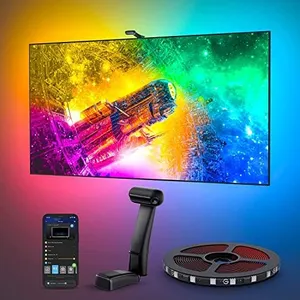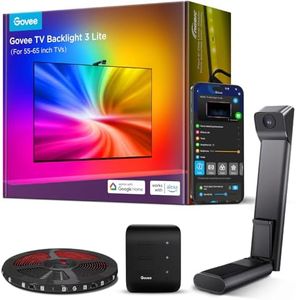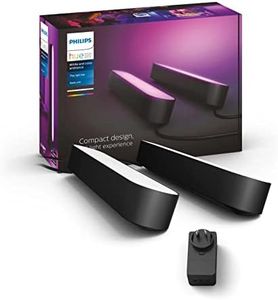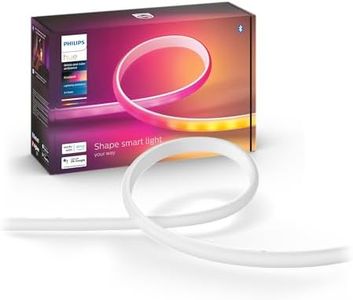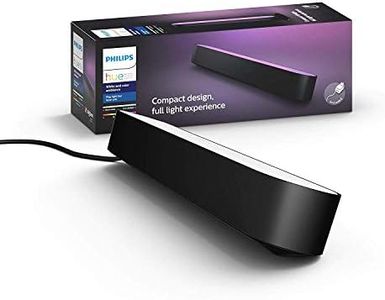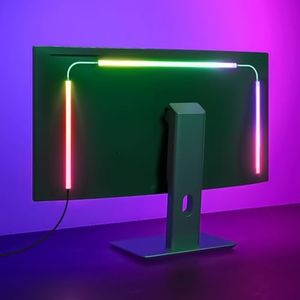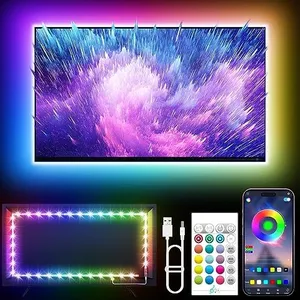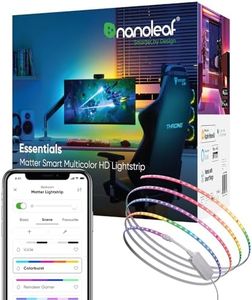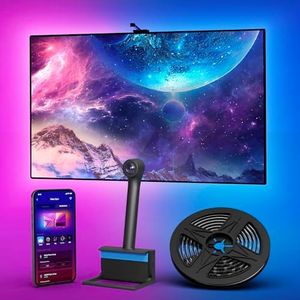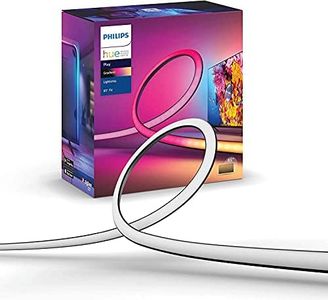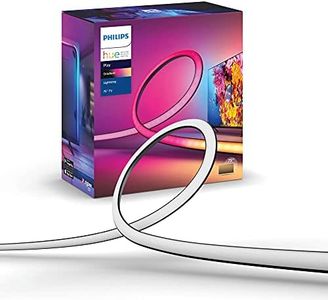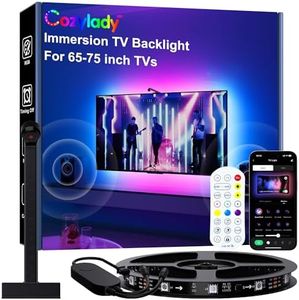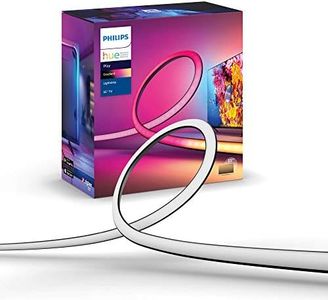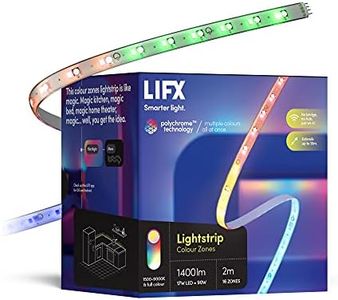We Use CookiesWe use cookies to enhance the security, performance,
functionality and for analytical and promotional activities. By continuing to browse this site you
are agreeing to our privacy policy
10 Best Led Lights For Tv
From leading brands and best sellers available on the web.Buying Guide for the Best Led Lights For Tv
Choosing the right LED lights for your TV can elevate your viewing experience, create a cozy atmosphere, and even reduce eye strain during long movie nights. However, it’s important to approach the selection with an understanding of what features matter and how they fit your particular needs. Rather than just picking the brightest or most colorful option, consider where and how you’ll use the lights, how they’ll complement your room, and which adjustments will give you the most enjoyable and safe lighting experience.BrightnessBrightness describes how much light the LEDs emit and is usually measured in lumens. This is important because too bright a light can be distracting, while lights that are too dim may not create the effect you want. Generally, LED strips for TVs range from very subtle (around 100-200 lumens per meter) to much brighter options (up to around 800 lumens per meter). For most living rooms or bedrooms, a moderate brightness (300-600 lumens per meter) strikes a good balance—enough to enhance the viewing experience without overpowering your screen. If your room is usually dark when watching TV, you can opt for lower brightness. If you like to use your LEDs as the main room light, go for higher brightness.
Color OptionsThis refers to whether the lights can display just one color (single-color), multiple fixed colors (multi-color), or a full spectrum of colors (RGB or RGBW) for dynamic effects. The importance lies in the atmosphere you want to create. Basic white or warm white lights are great for subtle backlighting and reducing eye strain, while RGB lights allow you to match lighting to your mood or content. If you enjoy frequent changes or themed lighting—like syncing with movies or games—look for full RGB options. For simple, classic backlighting, single or dual color may be enough.
Length and SizeLED strips come in various lengths, which determines how much of your TV and wall will be surrounded by light. It’s important because too long a strip may require trimming or clever mounting, while too short a strip won’t look complete. Most commonly, LED TV backlights are sold in standardized lengths that suit TV sizes (like 32-43 inches, 55-65 inches, etc.). Measure your TV’s perimeter or check the manufacturer’s recommendations to find a length that covers the back edges without wasted excess. If you have a unique-size screen or setup, choose a strip that can be cut to fit.
Power SourceLED strips for TVs are powered either through USB or via a wall outlet (adapter). USB-powered LEDs are very popular because you can plug them directly into your TV, so they turn on and off automatically with your television. However, these often have lower brightness because of USB power limits. Wall-powered strips can be brighter and have more features, but they’re less convenient if you don’t want extra wires. Think about your setup—if you want simplicity and don’t need maximum brightness, USB is best. For stronger effects and more features, go for wall-powered.
Control OptionsThis is how you change the colors, brightness, and effects of the LEDs. Some strips use a physical remote, while others connect to an app via Bluetooth or Wi-Fi. Advanced models may also work with voice assistants. If you prefer quick, easy adjustments without apps, look for models with a simple remote. For more effects, automation, or syncing with other smart devices, go for app-controlled strips. Your need for convenience, tech compatibility, and preferences on smart home features should guide this choice.
Syncing FeaturesCertain LED strips can sync their colors or effects with the content on your TV screen, music, or games. This creates a more immersive viewing experience, but requires special hardware or software. If you love a cinematic effect or game immersion, seek out models with this feature, keeping in mind setup may be a bit more complex. For general ambience or eye comfort, syncing isn’t necessary.
Ease of InstallationInstallation should be straightforward so you’re not left frustrated or with a messy setup. Some strips use adhesive backing, while others might have clips or mounts. Consider how confident you are with a DIY project and how often you might move or upgrade your TV. If you want minimal hassle, look for strong adhesive options with clear instructions. For more flexibility, mounting clips or reusable mounting solutions may be preferable.
